Schätzel in Nierstein, thanks to Christian Schiller’s birthday celebration!
June 24, 2012
Ask me a good way to celebrate 60 years of a rich, eventful and well-traveled life and I’ll direct you to my fellow wine blogging friend, Christian Schiller, whose wife Annette kindly invited me to their home in Frankfurt to celebrate Christian’s special birthday. Also present were their three children and one granddaughter. Over 30 friends who have been part of his life so far gathered in Frankfurt this past Saturday – from an old elementary school classmate in Germany to Tantely Andrianarivo, former Prime Minister of Madagascar, where Christian had worked for three years.
Christian and Annette divide their time between homes in Frankfurt am Main and in a Virginia suburb of Washington DC, where Christian worked for many years as an economist for the International Monetary Fund. Since 2009, he started to write about wine and has become very widely read, also becoming a member of the FIJEV (International Federation of Wine and Spirits Journalists and Writers).
He is one of the most active – and youthfully enthusiastic – bloggers I know, rather incessantly traveling around the world to meet winemakers and vintners and to taste fines wines, from South Africa to Oregon, by way of Germany and France.
A great pleasure for all: Annette had prepared a surprise visit and outdoor dinner to a mystery vineyard. After meeting and greeting with Kaffee und Kuchen at their place, we all boarded a large tour bus. Christian had no idea where we were headed, thinking at first a domain in the Rheingau.
But as we passed across the famous Roten Hang (Red Slope) and then into Nierstein, we were in the heart of Rheinhessen and ended up tasting some exceptional wines made by the young Kai Schätzel, the latest in a long series of generations dating back some 850 years, but he is known as one of the up and coming winemakers in the region. With reason.
Over dinner, we tasted some lovely wines, including a corpulent Hipping Silvaner whose palate presence very well stood up to the organically raised pork, grilled on an open pit. It was after all a very sunny day with just a slight breeze. The meal was served with freshly prepared mixed salads, baked potatoes and … feta cheese with Kalamata olives.
How ironic, noted one guest, who works in Brussels for the EU, given the context… We were all at a German vineyard, just one day after the national German football team’s decimation of hapless Greece – and in the midst of profound tensions between the two countries with regard to the Euro.
But I digress.
Also joining us was Dagmar Ehrlich, a well-known wine writer in Germany who had published a splendid book on grape varieties. It was fun tasting with her and discussing latest trends in winemaking and the importance of freshness in wine, a style that we both enjoy – and both found in some of the Schätzel wines.
After the dinner, we visited the 800+ year-old underground cellar, with old oak casks and the appropriately humid and moldy cellar aromas. A magical place to be.
What was special was to taste wines coming from such the exceptional terroir, the Red Slope. As Christian Schiller wrote on his wonderful blog:
The Roter Hang (Red Slope) is at the center of the Rheinterrasse. This steep slope extends for some five kilometers (three miles) with a total of 180 ha (445 acres) around Nierstein on the left bank of the Rhine. The Roter Hang has a very special terroir, resulting from the drop of the Rheinhessen plateau before human life started. As a consequence of these movements the Roter Hang has a mineral-rich soil, a mixture of iron and clayish slate, which is at least 250 million years old (Permian Period). Further, the slope faces south to southeast, which helps in terms of the solar radiation. The red slate retains warmth, and additional warmth comes from the sunlight reflected from the surface of the Rhine.
Christian’s profile of Kai Schätzel is excellent.
I would just add the interesting discussion on sulfur and that Kai does not believe that sulfur is a bad thing per se. Here we encounter a logical organic winemaker… That one needs some sulfur but not too much.
It was particularly wonderful to taste his Pettenthal Riesling, which is on waiting list only for the next three years. His vines border those of Keller who had recently purchased vines there as well, as you can read from my notes when I visited Klaus Peter. Perfumed floral aromas and a precise albeit tension ridden palate. Acidity is very high in 2010, not brutally so, but noticeable. I would give this wine some years in the cellar, five to 10, before it can be truly enjoyed. Although it was delicious today.
Notes on the wines
ReinWeiss 2011. Has a sweet mineral aroma. The palate is tasty, I noted just a slight bit of residual sugar (5.5 grams) but there is good salinity to match. Nothing profound, but for €5.80, a fine bottle of wine.
KabiNett Riesling 2011. I like the nose more here, has more mineral character, albeit with a touch of wet sock. There is a bit of carbon like spritz, oh so light. I was surprised to see the 10.5% alcohol on the back label, as the wine did not seem to be too sweet at all. Nice balance.
Reinlös Riesling 2010. The best nose so far, more precise, and a tasty palate that exudes an herbal freshness that is very appealing. A lovely wine, and well worth the price of admission.
ReinSchiefer Riesling 2010. Simply meaning Red Slate Riesling. Here is perhaps the best overall wine tasted today – when price is taken into account. For less than €10 per bottle, you get a tobacco mineral like nose, fine intensity, a lingering finish and excellent backbone coming from quite elevated acidity that is nevertheless unaggressive. I bought three bottles without much thought. The grapes come from various parts of his vineyard, including the red slope “and represents the medium range,” Kai explained.
Heiligenbaum Riesling 2010. This one costs €15 per bottle and comes from a south-facing vineyard but where there is an ample draft of wind, so it is actually a cooler vineyard. The result is a subtle wine on the nose – not as expressive as the above – with good sap on the palate. The overall balance seems just a touch disjointed, with sweetness and acidity battling it out, if just to a certain extent.
Pettenthal Riesling 2010. A magnificent wine, the best of all, exuding floral aromas, quite delicate on the nose. The palate is powerful in that it has very high acidity – 8.5 grams – but that is well integrated overall. Certainly a wine that will be better in a few years, but even now, it seems to approach an artistic expression. I can understand why the wine is already sold in 2010, 2011 and 2012. Just €20 per bottle – if you can find it.


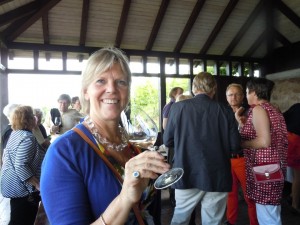
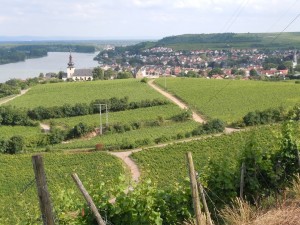
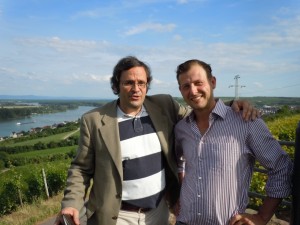
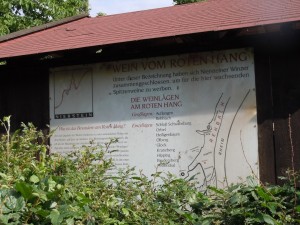
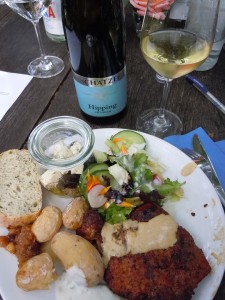
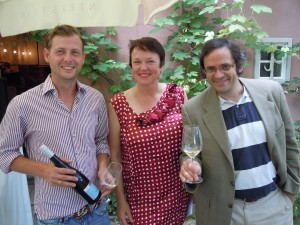
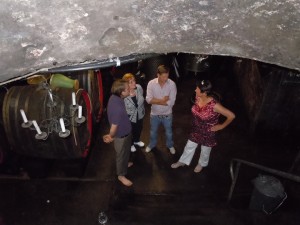
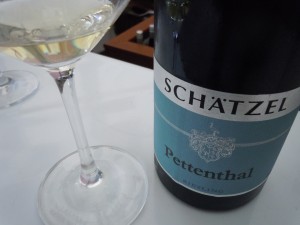
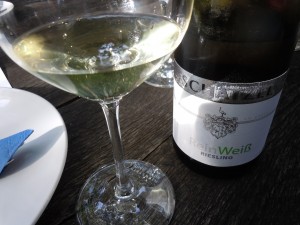
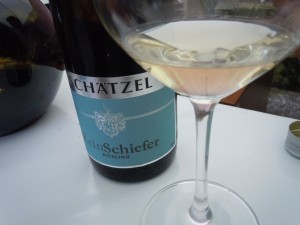
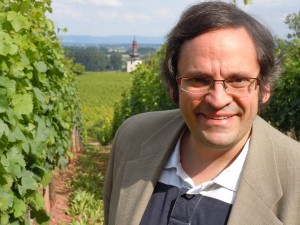
Hi Panos, I was really happy to know you and to have fun with the wines from Schätzel together with you. Have a nice week-end, Dagmar
[…] Connectionstowine.com […]